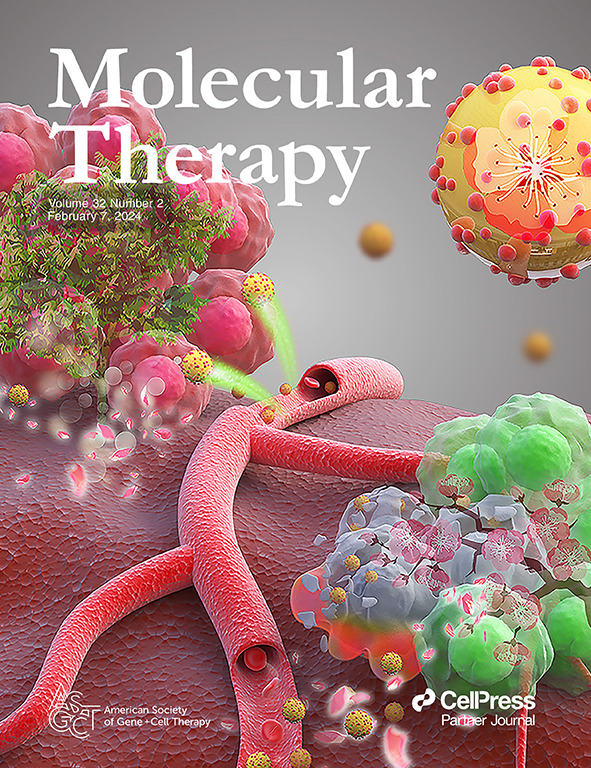新型小分子抑制剂M6766选择性抑制ERO1α,可预防小鼠动脉血栓形成和缺血性中风。
IF 12.1
1区 医学
Q1 BIOTECHNOLOGY & APPLIED MICROBIOLOGY
引用次数: 0
摘要
最近的研究利用内质网氧化还原酶1α (ERO1α)条件敲除(CKO)小鼠,强调了ERO1α在血栓形成条件下血小板活化中的关键作用。通过对39,901个化合物的高通量筛选,我们确定M6766是ERO1α的选择性抑制剂,IC50为1.4 μM, KD为1.1 μM。对接模型和生化研究表明,M6766与ERO1α中的fad结合口袋结合,比其他被测酶具有70倍的选择性,除ERO1β外,其抑制IC50为7.2 μM。M6766浓度依赖性地抑制各种激动剂诱导的颗粒分泌、α ib β3整合素激活、Ca2+动员和血小板聚集,但不影响激动剂诱导的活性氧的产生。用M6766预处理ERO1α可降低其与Ca2+传感器基质相互作用分子1的结合。为了验证这些抑制作用是否来自于对ERO1α和ERO1β的抑制,我们制造了巨核细胞特异性的ERO1β或ERO1α /β CKO小鼠。血小板Ero1α/β的缺失会损害血小板的活化和聚集,而Ero1β的缺失则没有影响。EN460明显抑制Ero1α/β-无效血小板的功能,而M6766则没有,这突出了其特异性。在动脉剪切条件下,M6766处理减少了胶原包被表面的血小板积聚。此外,小鼠静脉注射M6766可减少缺血性脑卒中时动脉血栓形成和梗死体积,但不延长尾出血次数。虽然依替巴肽(一种αIIbβ3拮抗剂)能有效阻断动脉血栓形成,但在治疗剂量下会延长出血时间。我们的研究结果表明,ERO1α抑制是一种有希望的抗血栓策略,与目前的治疗方法相比具有潜在的优势。本文章由计算机程序翻译,如有差异,请以英文原文为准。
Selective inhibition of ERO1α with M6766, a novel small-molecule inhibitor, prevents arterial thrombosis and ischemic stroke in mice.
Using endoplasmic reticulum oxidoreductase 1α (ERO1α) conditional knockout (CKO) mice, recent studies underscore the crucial role of ERO1α in platelet activation under thrombotic conditions. Through a high-throughput screen of 39,901 compounds, we identify M6766 as a selective inhibitor of ERO1α with an IC50 of 1.4 μM and a KD of 1.1 μM. A docking model and biochemical studies reveal that M6766 binds to the FAD-binding pocket in ERO1α and exhibits >70-fold selectivity over other tested enzymes, except ERO1β, which it inhibits with an IC50 of 7.2 μM. M6766 concentration-dependently inhibits granule secretion, αIIbβ3 integrin activation, Ca2+ mobilization, and platelet aggregation induced by various agonists, but it does not affect agonist-induced production of reactive oxygen species. Pretreatment of ERO1α with M6766 reduces its binding to the Ca2+ sensor stromal interaction molecule 1. To validate whether these inhibitory effects result from inhibition of ERO1α and ERO1β, we generate megakaryocyte-specific Ero1β or Ero1α/β CKO mice. Deletion of platelet Ero1α/β impairs platelet activation and aggregation, whereas deletion of Ero1β has no effect. While EN460 markedly inhibits the function of Ero1α/β-null platelets, M6766 does not, highlighting its specificity. M6766 treatment diminishes platelet accumulation on collagen-coated surfaces under arterial shear conditions. Moreover, intravenous injection of M6766 into mice decreases arterial thrombosis and infarct volume during ischemic stroke without prolonging tail bleeding times. Although eptifibatide, an αIIbβ3 antagonist, effectively blocks arterial thrombosis, it prolongs bleeding times at therapeutic doses. Our findings suggest that ERO1α inhibition is a promising anti-thrombotic strategy with potential advantages over current therapies.
求助全文
通过发布文献求助,成功后即可免费获取论文全文。
去求助
来源期刊

Molecular Therapy
医学-生物工程与应用微生物
CiteScore
19.20
自引率
3.20%
发文量
357
审稿时长
3 months
期刊介绍:
Molecular Therapy is the leading journal for research in gene transfer, vector development, stem cell manipulation, and therapeutic interventions. It covers a broad spectrum of topics including genetic and acquired disease correction, vaccine development, pre-clinical validation, safety/efficacy studies, and clinical trials. With a focus on advancing genetics, medicine, and biotechnology, Molecular Therapy publishes peer-reviewed research, reviews, and commentaries to showcase the latest advancements in the field. With an impressive impact factor of 12.4 in 2022, it continues to attract top-tier contributions.
 求助内容:
求助内容: 应助结果提醒方式:
应助结果提醒方式:


